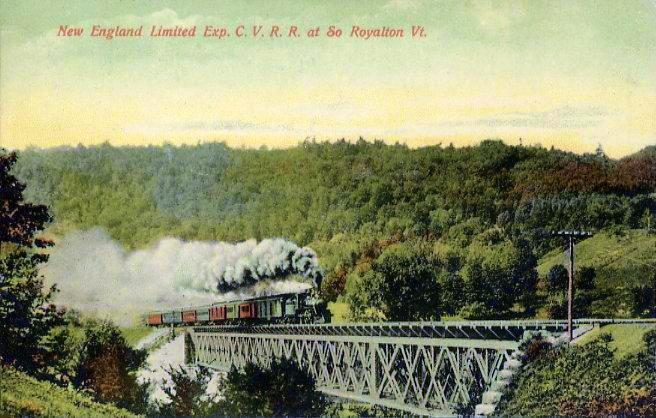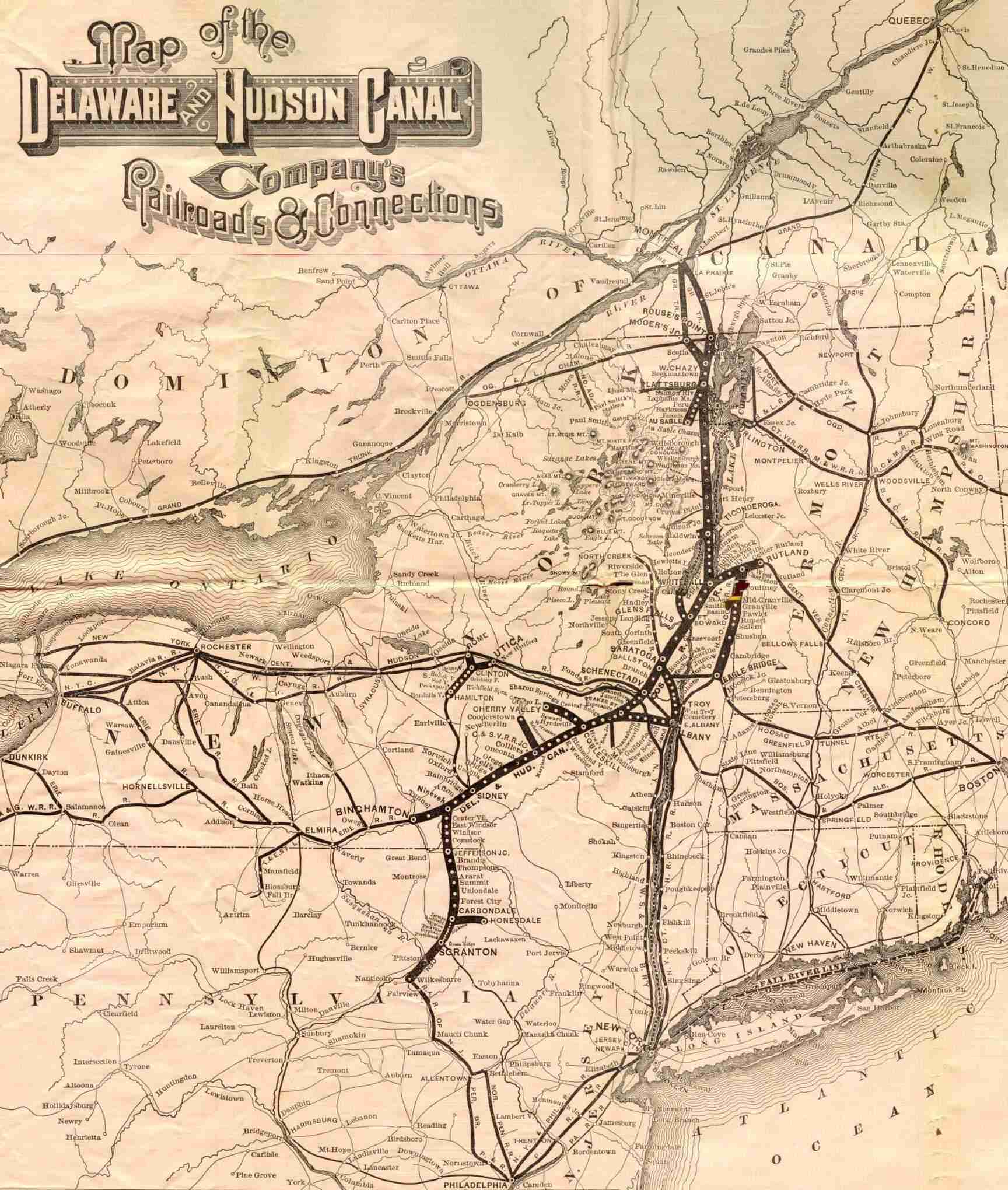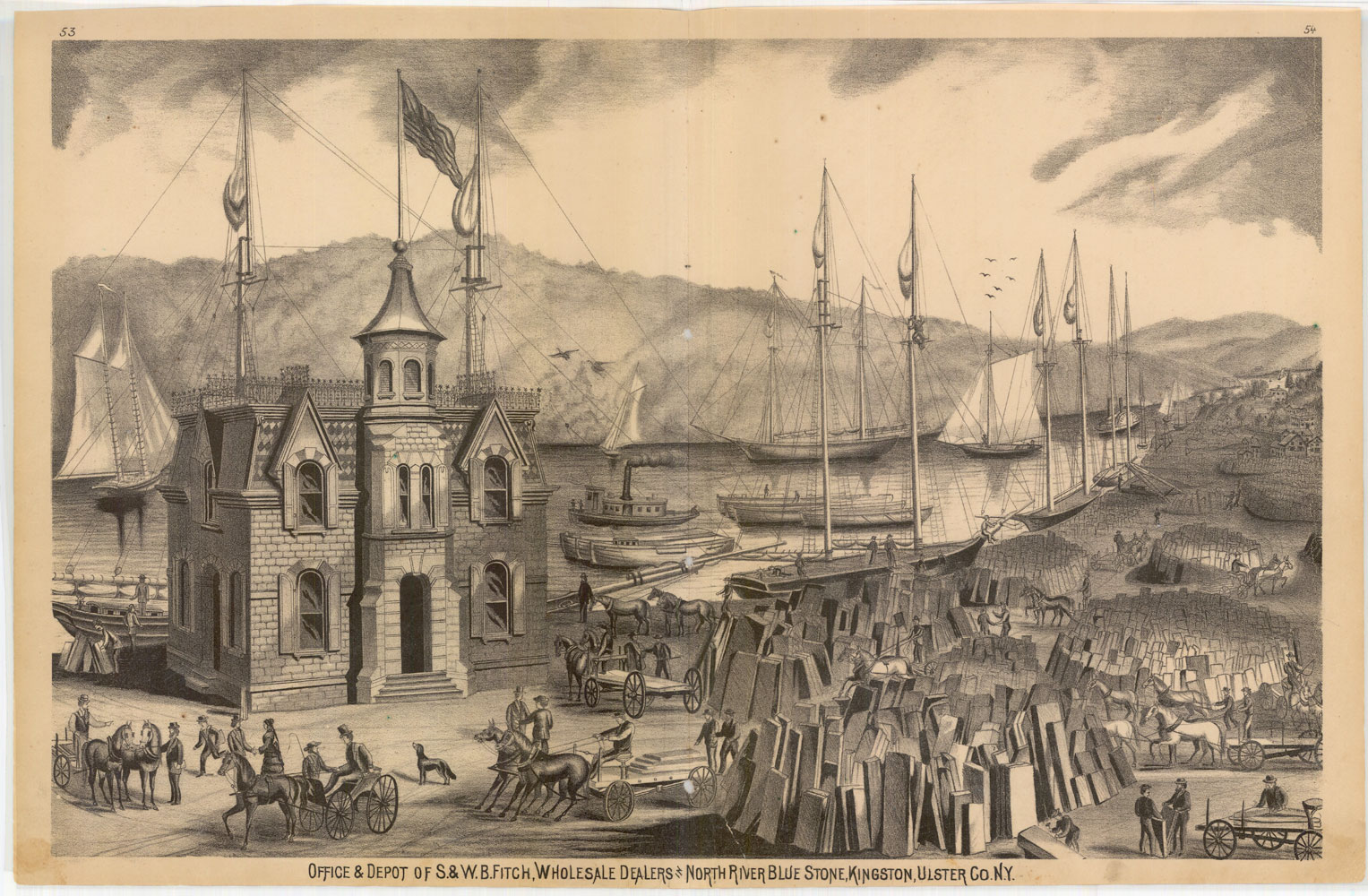|
Empire State Railway Museum
Established in 1960, the Empire State Railway Museum is a non-profit railroad museum currently located in the historic Ulster & Delaware Phoenicia Railroad Station, Phoenicia, New York. The station was built in 1899 by the U&D, and is one of the few surviving examples left along the line. The museum owns a small collection of historic railroad equipment. The museum was formerly the publisher of the annual ''Steam Railroad Directory'' until the 2006 edition, when the title was taken over by Kalmbach Publishing and now released as the ''Tourist Trains Guidebook''. ESRM in Middletown (1960-1970) The museum was established by railroad enthusiasts from the New York metropolitan area in 1960. The organization sponsored many steam excursions and other railfan activities throughout the region, but was working towards the goal of establishing a permanent home. The possibility of purchasing a segment of the New York Central Putnam Division was considered, as the middle portion of the lin ... [...More Info...] [...Related Items...] OR: [Wikipedia] [Google] [Baidu] |
Phoenicia Railroad Station
Phoenicia station is a repurposed train station located on High Street just south of Phoenicia, New York, United States. It is a frame building that opened in 1899. It was built by the Ulster and Delaware Railroad to replace an earlier station, primarily serving the patrons of hotels in the surrounding Catskill Mountains. It remained in use for about 55 years, after the New York Central Railroad bought the U&D on February 1, 1932, and ultimately ran its last passenger train on March 31, 1954. It was listed on the National Register of Historic Places in 1995 as the Phoenicia Railroad Station, and today is home to the Empire State Railway Museum. Property The station is located just south of High Street, a road that leads into Phoenicia from the NY 28 state highway. It is situated in an open area on the flood plain of nearby Esopus Creek across from the southwestern foot of Mount Tremper. There is a parking lot to the south, and a kiosk to the north, but no other buildings in the ... [...More Info...] [...Related Items...] OR: [Wikipedia] [Google] [Baidu] |
Ulster County, New York
Ulster County is a county in the U.S. state of New York. It is situated along the Hudson River. As of the 2020 census, the population was 181,851. The county seat is Kingston. The county is named after the Irish province of Ulster. History Founding and formation When part of the New Netherland colony, Dutch traders first called the area of present-day Ulster County "Esopus", a name borrowed for convenience from a locality on the opposite side of the Hudson. The local Lenape indigenous people called themselves Waranawanka, but soon came to be known to the Dutch as the "Esopus Indians" because they were encountered around the settlement known as Esopus. In 1652, Thomas Chambers, a freeholder from the Manor of Rensselaerswyck, purchased land at Esopus. He and several others actually settled and began farming by June, 1653. The settlements grew into the village of Wiltwijck, which the English later named Kingston. In 1683, the Duke of York created 12 counties in his province, ... [...More Info...] [...Related Items...] OR: [Wikipedia] [Google] [Baidu] |
New York, New Haven And Hartford Railroad
The New York, New Haven and Hartford Railroad , commonly known as The Consolidated, or simply as the New Haven, was a railroad that operated in the New England region of the United States from 1872 to December 31, 1968. Founded by the merger of the New York and New Haven Railroad, New York and New Haven and Hartford and New Haven Railroad, Hartford and New Haven railroads, the company had near-total dominance of railroad traffic in Southern New England for the first half of the 20th century. Beginning in the 1890s and accelerating in 1903, New York banker J. P. Morgan sought to monopolize New England transportation by arranging the NH's acquisition of 50 companies, including other railroads and steamship lines, and building a network of electrified trolley lines that provided interurban transportation for all of southern New England. By 1912, the New Haven operated more than of track, with 120,000 employees, and practically monopolized traffic in a wide swath from Boston to New ... [...More Info...] [...Related Items...] OR: [Wikipedia] [Google] [Baidu] |
Central Vermont Railroad
The Central Vermont Railway was a railroad that operated in the U.S. states of Connecticut, Massachusetts, New Hampshire, New York, and Vermont, as well as the Canadian province of Quebec. It connected Montreal, Quebec, with New London, Connecticut, using a route along the shores of Lake Champlain, through the Green Mountains and along the Connecticut River valley, as well as Montreal to Boston, Massachusetts, through a connection with the Boston and Maine Railroad at White River Junction, Vermont. History The Vermont Central Railroad was chartered October 31, 1843, to build a line across the center of Vermont, running from Burlington on Lake Champlain east to Montpelier, and then southeast and south to Windsor on the Connecticut River. Initial plans had the main line running through Montpelier. However, due to the difficulty of building through the Williamstown Gulf, a narrow valley south of Barre, Vermont, and to land interests of Charles Paine in Northfield, Vermont, a ... [...More Info...] [...Related Items...] OR: [Wikipedia] [Google] [Baidu] |
Boston & Maine Railroad
The Boston and Maine Railroad was a U.S. Class I railroad in northern New England. Originally chartered in 1835, it became part of what was the Pan Am Railways network in 1983 (most of which was purchased by CSX in 2022). At the end of 1970, B&M operated on of track, not including Springfield Terminal. That year it reported 2,744 million ton-miles of revenue freight and 92 million passenger-miles. History The Andover and Wilmington Railroad was incorporated March 15, 1833, to build a branch from the Boston and Lowell Railroad at Wilmington, Massachusetts, north to Andover, Massachusetts. The line opened to Andover on August 8, 1836. The name was changed to the Andover and Haverhill Railroad on April 18, 1837, reflecting plans to build further to Haverhill, Massachusetts (opened later that year), and yet further to Portland, Maine, with renaming to the Boston and Portland Railroad on April 3, 1839, opening to the New Hampshire state line in 1840. The Boston and Maine Railroad ... [...More Info...] [...Related Items...] OR: [Wikipedia] [Google] [Baidu] |
Delaware & Hudson Railway
The Delaware and Hudson Railway (D&H) is a railroad that operates in the Northeastern United States. In 1991, after more than 150 years as an independent railroad, the D&H was purchased by the Canadian Pacific Railway (CP). CP operates D&H under its subsidiary Soo Line Corporation which also operates Soo Line Railroad. D&H's name originates from the 1823 New York state corporation charter listing "The President, Managers and Company of the Delaware & Hudson Canal Co." authorizing an establishment of "water communication" between the Delaware River and the Hudson River. Nicknamed "The Bridge Line to New England and Canada," D&H connected New York with Montreal, Quebec and New England. D&H has also been known as "North America's oldest continually operated transportation company." On September 19, 2015, the Norfolk Southern Railway completed acquisition of the D&H South Line from CP. The D&H South Line is 282 miles (454 kilometers) long and connects Schenectady, New York, to ... [...More Info...] [...Related Items...] OR: [Wikipedia] [Google] [Baidu] |
Strasburg Railroad
The Strasburg Rail Road is a heritage railroad and the oldest continuously operating standard-gauge railroad in the western hemisphere, as well as the oldest public utility in the Commonwealth of Pennsylvania. Chartered in 1832, the Strasburg Rail Road Company is today a heritage railroad offering excursion trains hauled by steam locomotives on of track in Pennsylvania Dutch Country, as well as providing contract railroad mechanical services, and freight service to area shippers. The railroad's headquarters are outside Strasburg, Pennsylvania. Strasburg has a total of 5 operational steam locomotives on its roster, as well as several others in various stages of restoration. As of 2022, Canadian National No. 89, Norfolk & Western No. 475 and Brooklyn Eastern District Terminal No. 15 (rebuilt as Thomas the Tank Engine) are all in active service. Canadian National No. 7312 (No. 31) is currently undergoing restoration while Great Western No. 90 is undergoing its FRA inspection an ... [...More Info...] [...Related Items...] OR: [Wikipedia] [Google] [Baidu] |
Steam Locomotive
A steam locomotive is a locomotive that provides the force to move itself and other vehicles by means of the expansion of steam. It is fuelled by burning combustible material (usually coal, oil or, rarely, wood) to heat water in the locomotive's boiler to the point where it becomes gaseous and its volume increases 1,700 times. Functionally, it is a steam engine on wheels. In most locomotives, the steam is admitted alternately to each end of its cylinders, in which pistons are mechanically connected to the locomotive's main wheels. Fuel and water supplies are usually carried with the locomotive, either on the locomotive itself or in a tender coupled to it. Variations in this general design include electrically-powered boilers, turbines in place of pistons, and using steam generated externally. Steam locomotives were first developed in the United Kingdom during the early 19th century and used for railway transport until the middle of the 20th century. Richard Trevithick ... [...More Info...] [...Related Items...] OR: [Wikipedia] [Google] [Baidu] |
Kingston, New York
Kingston is a Administrative divisions of New York#City, city in and the county seat of Ulster County, New York, United States. It is north of New York City and south of Albany, New York, Albany. The city's metropolitan area is grouped with the New York metropolitan area around Manhattan by the United States Census Bureau. The population was 24,069 at the 2020 United States Census. Kingston became New York's first capital in 1777. During the American Revolutionary War, the city Burning of Kingston, was burned by the British on October 13, 1777, after the Battles of Saratoga. In the 19th century, it became an important transport hub after the discovery of Rosendale cement, natural cement in the region. It had connections to other markets through both the railroad and canal connections. Many of the older buildings are considered contributing as part of three historic districts, including the Kingston Stockade District, Stockade District uptown, the Midtown Neighborhood Broadway ... [...More Info...] [...Related Items...] OR: [Wikipedia] [Google] [Baidu] |
Lake Superior And Ishpeming 23
Lake Superior and Ishpeming Railroad No. 23 is a preserved SC-4 class 2-8-0 "consolidation" type steam locomotive originally built by the ALCO in January 1910 for the Lake Superior and Ishpeming Railroad as No. 9. It was renumbered 23 in 1923. It was used for pulling carloads of iron ore, as well as some passenger trains on branch lines, until 1962. In 1963, it was leased to the Marquette and Huron Mountain tourist railroad for use in excursion service between Marquette and Big Bay, until 1974. It was the locomotive that had the longest operating career on the M&HM. After the M&HM was shut down in 1984, No. 23 was sold off to the Empire State Railway Museum in Phoenicia, New York, where it remained as a display piece until 2002. That same year, ESRM announced that they would restore the locomotive to operating condition, and they began the rebuilding process at the Catskill Mountain Railroad's Kingston yard site. As of 2023, No. 23 is still undergoing restoration. History Or ... [...More Info...] [...Related Items...] OR: [Wikipedia] [Google] [Baidu] |
2-8-0
Under the Whyte notation for the classification of steam locomotives, represents the wheel arrangement of two leading wheels on one axle, usually in a leading truck, eight powered and coupled driving wheels on four axles, and no trailing wheels. In the United States and elsewhere, this wheel arrangement is commonly known as a Consolidation, after the Lehigh and Mahanoy Railroad’s ''Consolidation'', the name of the first 2-8-0.White, John H. Jr. (1968). ''A history of the American locomotive; its development: 1830-1880''. New York: Dover Publications, p. 65. The notation 2-8-0T indicates a tank locomotive of this wheel arrangement, the "T" suffix indicating a locomotive on which the water is carried in side-tanks mounted on the engine rather than in an attached tender. The Consolidation represented a notable advance in locomotive power. After 1875, it became "the most popular type of freight locomotive in the United States and was built in greater quantities than any other si ... [...More Info...] [...Related Items...] OR: [Wikipedia] [Google] [Baidu] |
Lake Superior And Ishpeming Railroad
The Lake Superior and Ishpeming Railroad , is a U.S. railroad offering service from Marquette, Michigan, to nearby locations in Michigan's Upper Peninsula. It began operations in 1896. The LS&I continues to operate as an independent railroad from its headquarters in Marquette. At the end of 1970, LS&I operated 117 miles of road on 241 miles of track (188 on 388 km); that year it reported of freight. In 2011, LS&I had been reduced to of track. History The Lake Superior and Ishpeming Railway was organized in 1893 as a subsidiary of Cleveland-Cliffs Iron Company (now Cleveland-Cliffs Inc.), the iron ore mining company. From the start the railroad's primary business was the transport of iron ore from the Marquette Iron Range, west of Marquette, to docks on Lake Superior from which the ore could be shipped to steel mills on the lower Great Lakes. The primary towns on the iron range are Ishpeming and Negaunee, Michigan.In 1904 the railroad carried over of freight, and ov ... [...More Info...] [...Related Items...] OR: [Wikipedia] [Google] [Baidu] |










